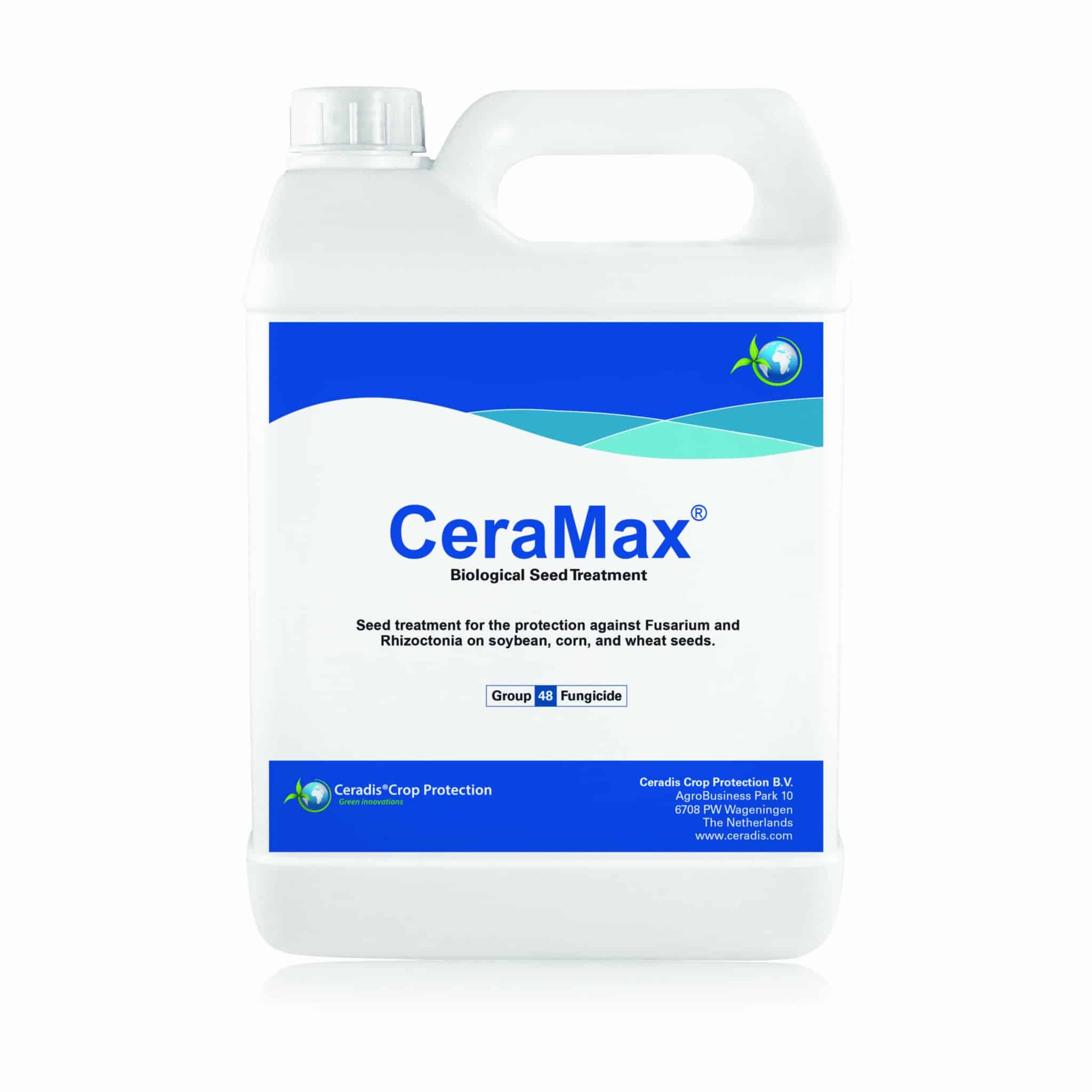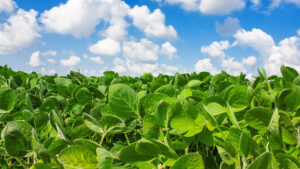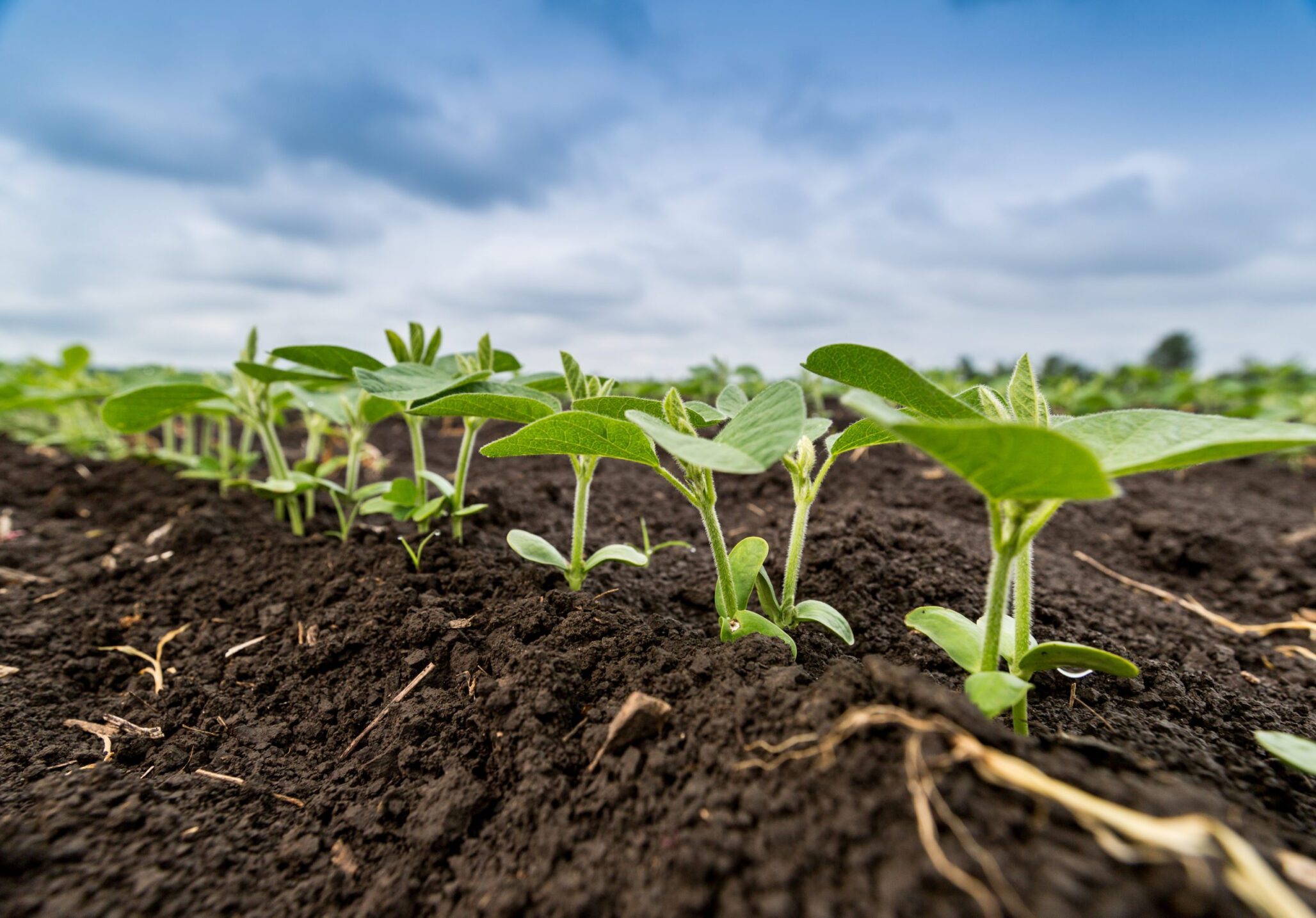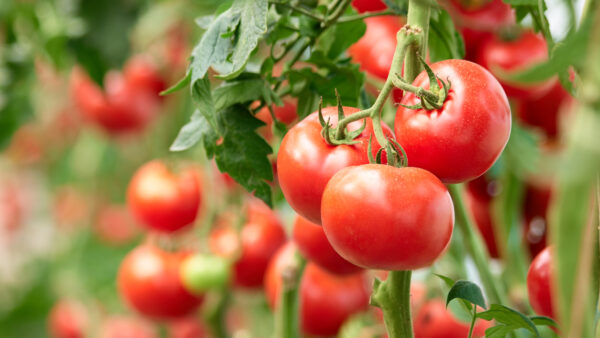In the quest for more sustainable farming practices, biological seed treatments have been coming into focus more. Why? Biological solutions can now provide growers with both performance and economic benefits in comparison to many market standards. They’re also demonstrating key advantages in the areas of handling, improved crop safety, and sustainability.
In 2021, Ceradis Crop Protection introduced CeraMax, a biological seed treatment for the prevention of soilborne fungal diseases including Rhizoctonia and Fusarium virguliforme, the causal agent of Sudden Death Syndrome (SDS) in soybeans.
With inherent performance and environmental advantages, CeraMax delivers multi-functional attributes that improve plant health, vigor, and yield, plus a level of safety that is not often offered with traditional synthetic-based seed treatments.
Approved in the U.S. for use in soybeans, corn and wheat, Ceradis plans to expand CeraMax’s footprint into Canada. Label submission for Canada is scheduled for 2023 with anticipated registration before the 2024 growing season.
So how does CeraMax work? CeraMax contains the active ingredient Natamycin, a biological molecule produced by soil bacteria that acts as a defense mechanism against soilborne diseases. By stimulating key defensive pathways prior to fungal infection, the seed (and/or plant) utilize its genetic resistance to prime the plant’s physiology or establish itself in a ready state before disease sets in.
Competitive performance benefits of CeraMax include:
- Top seed safety profile for germination and stand protection
- No phytotoxicity, seedling stress, or risk of ‘Halo’ effect
- An active ingredient that shows no proven signs of forming any resistance
- Blending compatibility with other seed treatments and inoculants
- No time restrictions between treatment and use
In multi-year research trials across 10 states, soybeans treated with the addition of CeraMax to Acceleron¨ Standard* showed significantly lower SDS disease incidence with an average yield increase of 4.3 bushels per acre compared to Acceleron Standard used alone. Based on 2021 commodity prices, growers who used CeraMax saw on average a $50 per acre increase.
“CeraMax is demonstrating its value by addressing some of the biggest issues growers face right now,” says Jan Stechmann, Ceradis VP of Sales and Marketing. “In addition, the rapid adoption of CeraMax in areas where soybean SDS has a trending history represents an important validation of the market’s growing demand for next-generation alternatives.”
According to Stechmann, the transition to CeraMax is an easy one for growers wanting to move toward sustainable products without sacrificing performance.
“CeraMax is a model product for what the industry has been waiting for. It’s equivalent in SDS performance to market leading synthetic seed treatments while offering better environmental stewardship features and greater economic value.”
Beyond field performance, CeraMax also provides numerous advantages in the seed treatment blending process.
Available in a ready-to-use stable liquid formulation, CeraMax offers smooth blending for consistent seed coverage and adhesion. It also provides low use rate technology and is compatible across a broad range of seed treatments with excellent durability and a two-year shelf life.
Editor’s Note: This piece has been updated with the correct photo for CeraMax.













